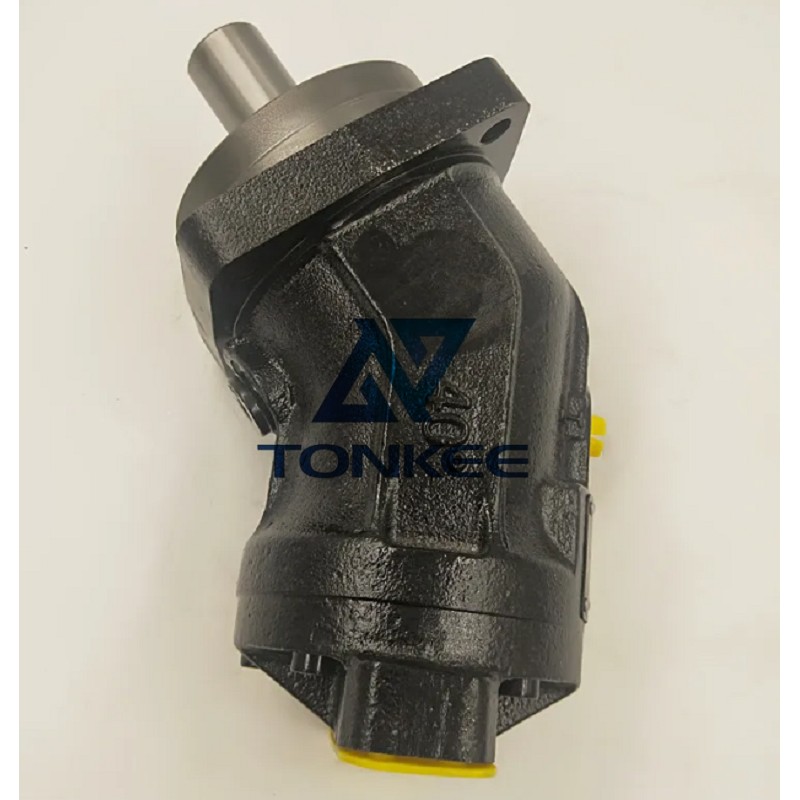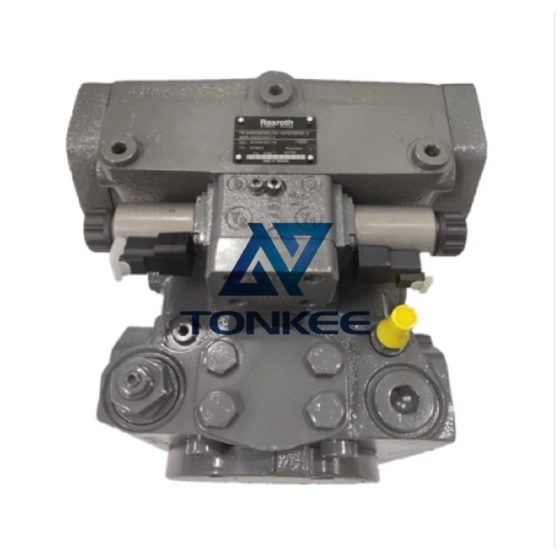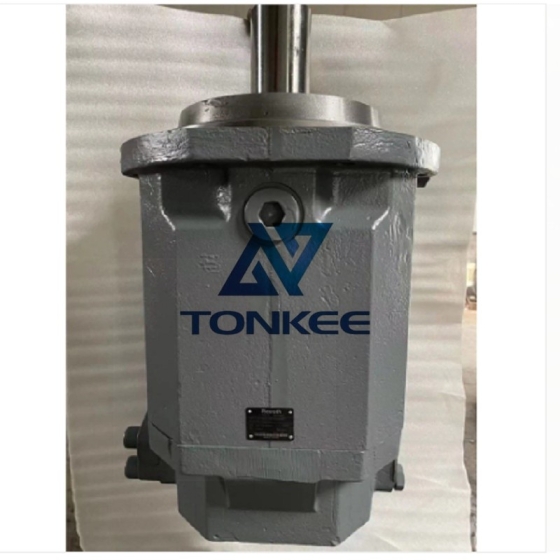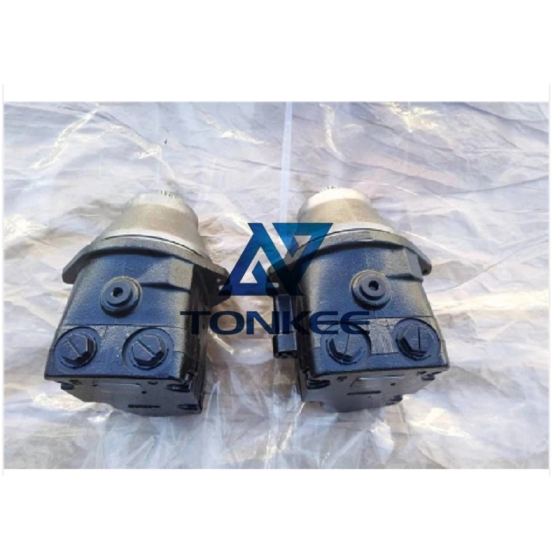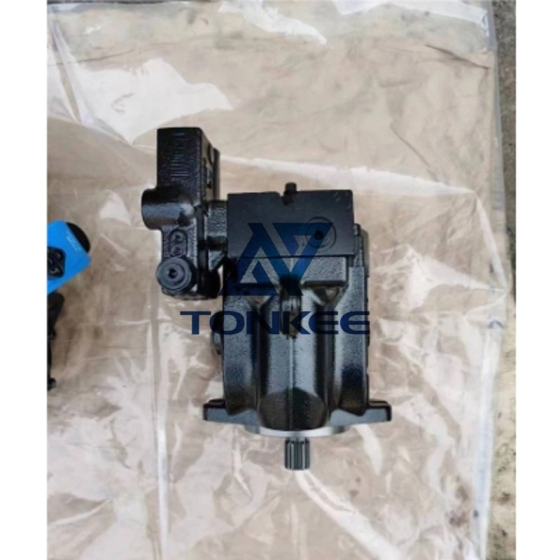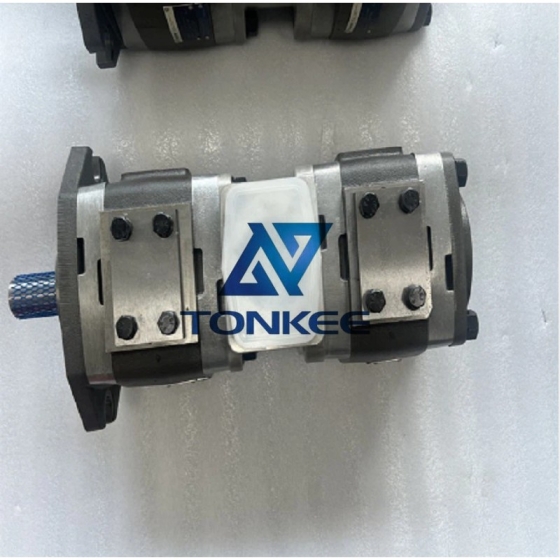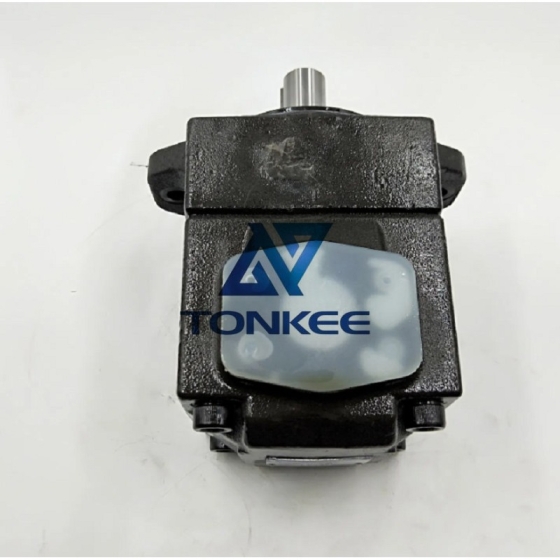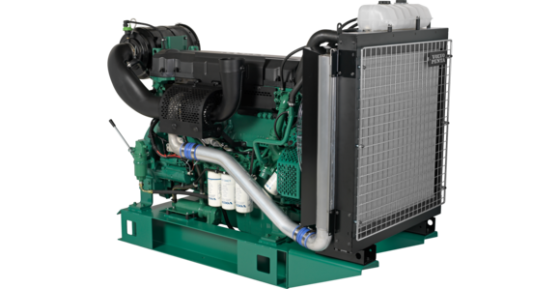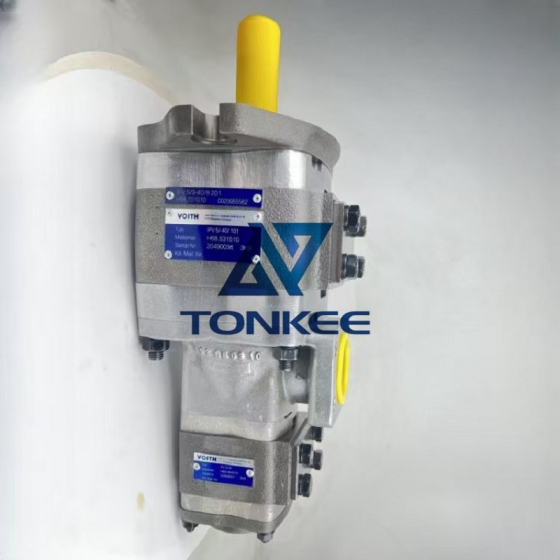A2FM180/61W-Vab010 Hydraulic Pump
Q1: What type of hydraulic products are A2FM80/61W-Vab192fj and A2FM180/61W-Vab010? What is the core structural feature of the A2FM series?
English Answer: Both A2FM80/61W-Vab192fj and A2FM180/61W-Vab010 belong to bent-axis axial piston pump motors—they are dual-purpose hydraulic components that can function as either a pump (converting mechanical energy to hydraulic energy) or a motor (converting hydraulic energy to mechanical energy) depending on the system configuration. The core structural feature of the A2FM series is the bent-axis design: the cylinder block and the drive shaft form a specific angle (instead of being coaxial), which enables efficient transmission of high torque and stable operation under high-pressure conditions.
Q2: How to interpret the model codes of A2FM80/61W-Vab192fj and A2FM180/61W-Vab010? What is the key difference between the two models?
English Answer: The model codes follow a unified technical specification for the A2FM series, with each segment representing specific parameters. The interpretation and key differences are as follows:
- Common segments:
- A2FM: Basic series identifier, indicating a bent-axis axial piston pump motor.
- 61W: Mounting and shaft end code, representing standard flange mounting and a fixed shaft end structure (e.g., keyway type for power transmission).
- Differentiated segments:
- Displacement code: “80” in A2FM80/61W-Vab192fj means a displacement of 80 ซีซี/รอบ; “180” in A2FM180/61W-Vab010 means a displacement of 180 ซีซี/รอบ. This is the core difference—displacement directly determines output torque (higher displacement = higher torque at the same pressure) and flow rate (higher displacement = higher flow at the same speed).
- ควบคุม & auxiliary codes: “Vab192fj” (for 80cc model) และ “Vab010” (for 180cc model) differ in pressure compensation modes, seal materials, and minor structural adjustments. ตัวอย่างเช่น, “Vab192fj” may be optimized for low-temperature resistance, while “Vab010” could be designed for standard industrial temperature ranges.
Q3: What are the typical application scenarios for A2FM80/61W-Vab192fj and A2FM180/61W-Vab010 respectively?
English Answer: Due to the difference in displacement, the two models are adapted to different load and torque requirements, with typical applications as follows:
- A2FM80/61W-Vab192fj (80 ซีซี/รอบ): Suitable for medium-load, medium-speed scenarios, เช่น:
- Construction machinery: Rotary mechanisms of small excavators, skid steer loaders, and compact road rollers.
- Industrial equipment: Drives for medium-sized conveyor belts, hydraulic winches (light-duty), and rotary tables of small machine tools.
- Agricultural machinery: Rotary components of medium-sized harvesters and irrigation system pumps.
- A2FM180/61W-Vab010 (180 ซีซี/รอบ): Suitable for heavy-load, low-speed scenarios, เช่น:
- Construction machinery: Rotary platforms of medium/large excavators, truck cranes, and large road rollers.
- Mining machinery: Drives for small mining loaders, crusher rotary parts, and underground scraper conveyors.
- Heavy industry: Hydraulic presses (auxiliary drive), port machinery (heavy-duty winches), and marine auxiliary equipment (anchor winches).
Q4: What are the shared performance advantages of these two A2FM series pump motors?
English Answer: As products of the same A2FM series, they share three core performance advantages:
- High pressure resistance: Both can withstand a maximum working pressure of up to 400 บาร์ (rated pressure around 315 บาร์), meeting the high-pressure requirements of heavy-duty hydraulic systems and ensuring stable operation under overload conditions (ระยะสั้น 10% overpressure allowed).
- High efficiency & low energy loss: The precision-machined piston-cylinder assembly and optimized bent-axis angle minimize internal leakage. Under rated conditions, their volumetric efficiency exceeds 90% and mechanical efficiency exceeds 85%, reducing energy waste.
- Strong durability: Key components (ลูกสูบ, drive shafts, ตลับลูกปืน) are made of high-strength alloy steel and undergo surface hardening (e.g., nitriding) treatment. This improves wear resistance and corrosion resistance, with an average service life of over 8,000 operating hours under proper maintenance.
Q5: When selecting between A2FM80/61W-Vab192fj and A2FM180/61W-Vab010, what key factors should be considered?
English Answer: To select the correct model, focus on four key matching factors:
- System torque requirement: Calculate the required torque based on the load (e.g., lifting weight, rotational resistance). Choose A2FM180/61W-Vab010 if high torque is needed (e.g., heavy crane rotation), and A2FM80/61W-Vab192fj for medium torque (e.g., small loader rotation).
- Speed requirement: Higher displacement (A2FM180) leads to lower speed at the same flow rate, while lower displacement (A2FM80) leads to higher speed. Match the model to the system’s required rotational speed (e.g., 50-200 rpm for heavy load, 200-500 rpm for medium load).
- Environmental adaptability: Check the control code’s environmental optimization—for example, if the equipment operates in cold areas (-20°C to 0°C), A2FM80/61W-Vab192fj (with “192fj” possibly optimized for low temperature) is preferred; for standard industrial environments (0°C to 40°C), A2FM180/61W-Vab010 is suitable.
- Installation space: The 180cc model (A2FM180) has a larger overall size (longer length, larger flange diameter) than the 80cc model (A2FM80). Ensure the equipment’s installation space can accommodate the selected model’s dimensions.
Q6: What maintenance precautions are common to both pump motors?
English Answer: To extend their service life, follow these shared maintenance guidelines:
- Hydraulic oil management: Use hydraulic oil that meets the manufacturer’s recommendation (typically ISO VG 46 or VG 68 for industrial use; anti-wear type). Replace the oil every 2,000-3,000 เวลาทำงาน, and replace the oil filter every 1,000 ชั่วโมง. Avoid mixing different brands or grades of oil.
- Temperature & pressure monitoring: During operation, monitor the surface temperature (not exceeding 80°C) and system pressure (not exceeding 80% of the maximum pressure for long-term use). If the temperature is too high (over 90°C) or pressure fluctuates abnormally, stop the machine immediately to check for blockages or leakage.
- Seal inspection & replacement: Check the oil port seals and shaft end seals every 6 months. Replace worn or cracked seals promptly to prevent oil leakage and air ingress (which causes cavitation and noise).
- Storage & idle protection: If the pump motor is idle for more than 3 months, drain the internal hydraulic oil, fill it with anti-rust oil, and store it in a dry, ventilated environment (temperature 5°C-30°C, humidity <60%).
 โลโก้เครื่องจักร Tonkee
โลโก้เครื่องจักร Tonkee


